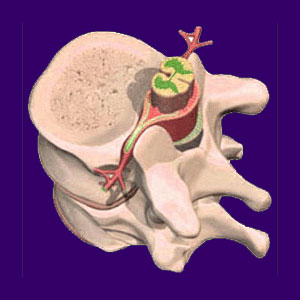
The epidural space is also commonly known as the epidural compartment, the extradural compartment, the extradural space, the peridural space or the peridural compartment. This area of the spine resides inside the vertebral bones, which form the central spinal canal, yet outside of the dura mater, which surrounds the spinal cord and cauda equina.
This article will help back and neck pain sufferers to better understand this area of the spinal anatomy, often brought to their attention during particular types of injection therapies or minimally invasive surgical practices.
Epidural Space Anatomy
The epidural compartment contains a variety of tissue types, including some crucial blood vessels, some localized neurological tissues, all the spinal nerve roots which branch off the spinal cord, some fatty tissue and some lymphatic tissue.
The epidural compartment extends from the foramen magnum at the base of the skull to the sacrococcygeal juncture.
In the back pain industry, the epidural space is the location for many invasive treatments, ranging from simple epidural injections to minimally invasive surgical procedures and fully open spinal surgery techniques.
Epidural Compartment Information
The actual anatomy of this area of the body probably means nothing to most patients. However, the high incidence of complications arising from invasive back pain treatment targeting the region is something for every patient to consider.
Epidural injections are known for creating the possibility of epidural compartment syndrome; a rare, but potentially very serious condition. Additionally, these shots can sometimes accidentally pierce the thecal sac and create cerebral spinal fluid leaks, which can require surgical intervention to seal.
Be careful when considering injection therapies, since although the doctor may tell you that it is just a shot, the reality is that it is an injection that comes within a tiny distance of your spinal cord. It can do permanent damage, and at best, will be little more than a temporary fix for your pain.
Epidural Compartment Summary
Getting any type of epidural injection should only be considered if the rewards have a good chance of outweighing the risks. This is a very subjective matter for most patients, since the majority do not understand that almost all epidural injection therapies are nothing more than symptomatic care. In essence, they have little hope of providing a cure.
Of course, the exception to this rule is for patients who have been definitively diagnosed with chemical nerve root irritation. In these circumstances, flushing injections might actually help to resolve the pain for an extended duration.
If you could only see the literal thousands of letters we have received over the years detailing complications, and even deaths, as direct results of epidural injection treatment, you would definitely think very carefully before allowing any physician to perform one on your body.




